|
This accident occured on the Bearcamp River around April 1993
below a broken dam (since removed). The river was high; the
washout just below the dam was shallow and Skip (and boat) were
swept into concrete debris where the boat pinned and quickly
wrapped. Both wood gunnels snapped immediately; both sides
of the boat ripped down into the bottom of the hull; and the
debris broke thru the center of the bottom. The boat was saved
from being torn completely in two by extensive side floatation
that provided extra boyancy and strength.
The boat was slowly put back together. Jim Booker welded the hull back to it's original form. New (Tripper) gunnels were installed by Mell Noll and Skip, and the boat paddled for many more years (including a trip down the Grand Canyon in 1994). These pictures were taken approximately ten years later just before the boat was finally retired as the overall hull just got too weak and developed many leaks. |
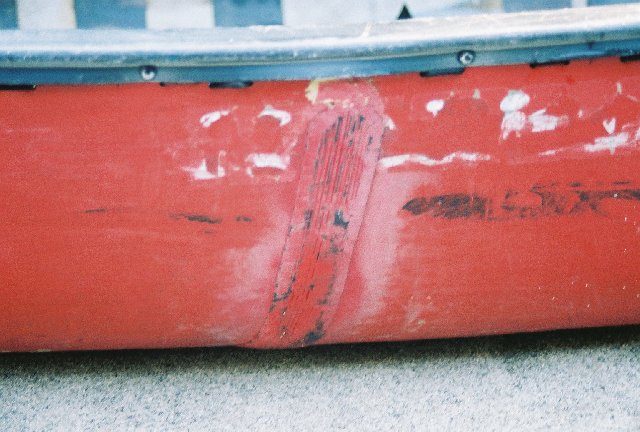
| 1. Right outside repair. Note the weld did not extend all the way to the top to allow room for gunnel replacement. |
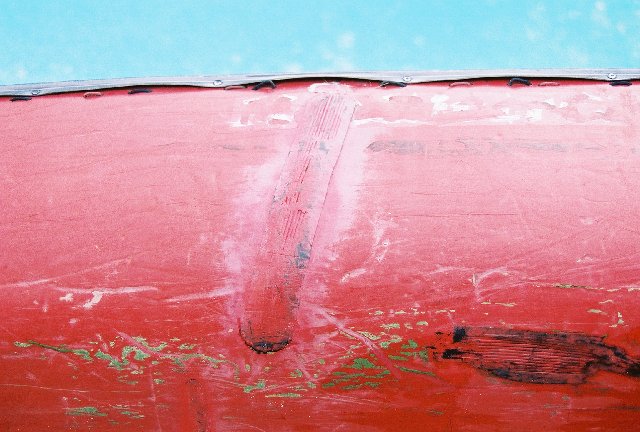
| 2. Right outside repair, the rip extended down into the bottom of the hull. Note some additional patches applied in later years. |
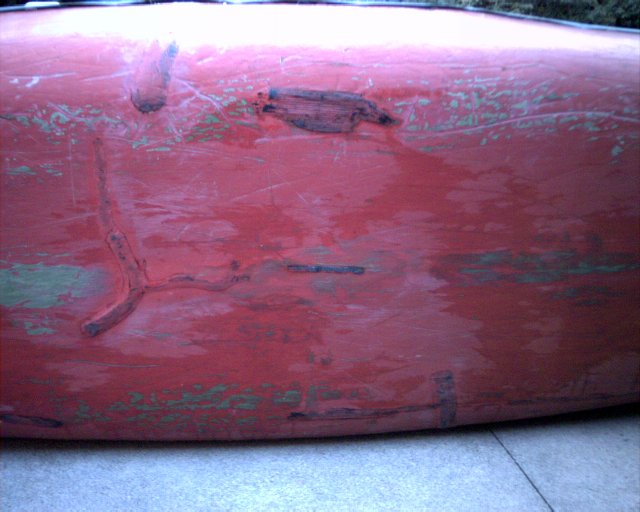
| 3. Bottom outside repair, the rip/hole had completly broken thru creating a jagged hole. |

| 4. Bottom cutside closeup, this was a jagged three-sided rip requiring extra reinforcement on the inside. (The rip was longer on the inside then the outside.) |
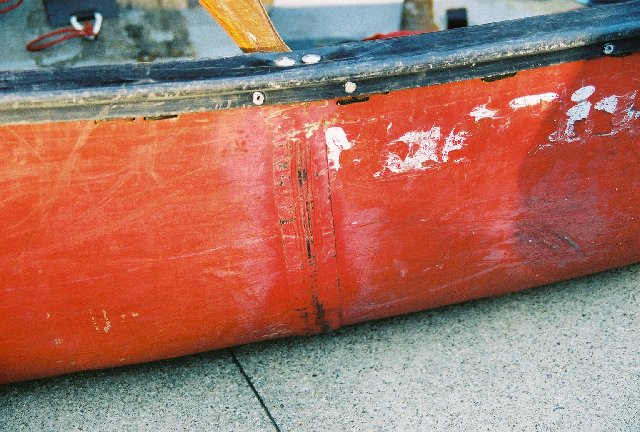
| 5. The left side had a similar tear, slightly furthur forward. |
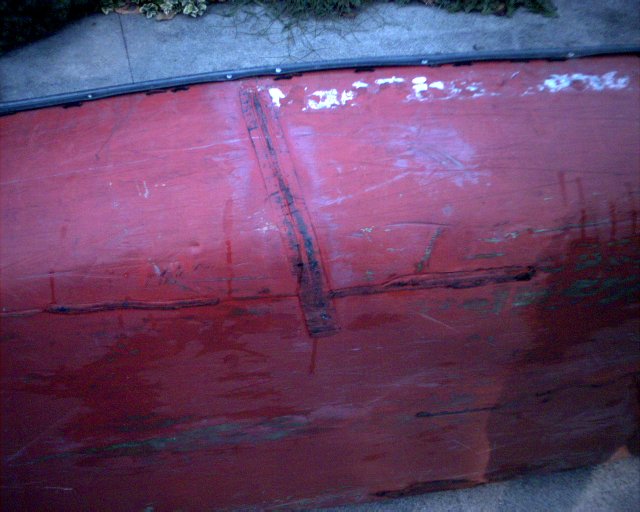
| 6. The left repair likewise extended down and into the bottom. The lengthwise welds date from a later period. |
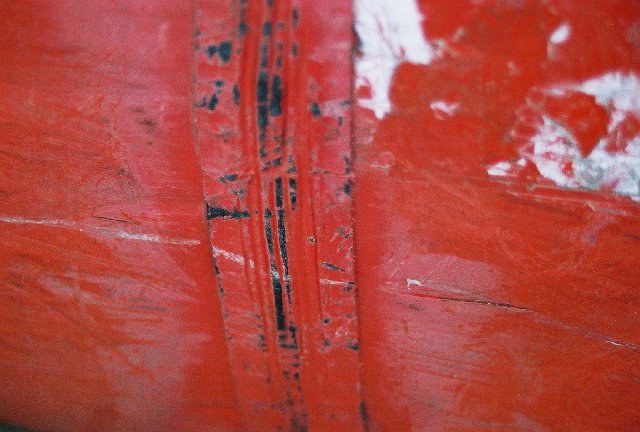
| 7. Closeup of left outside repair. This weld is much wider then most welds that repair typical cracks, the center of the boat undergoes lots of flexing and the repair will undergo high stress. |
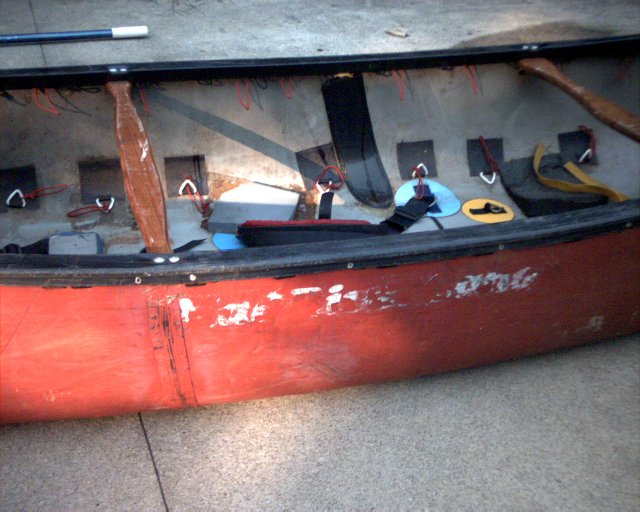
| 8. View of right inside and left outside repairs. |
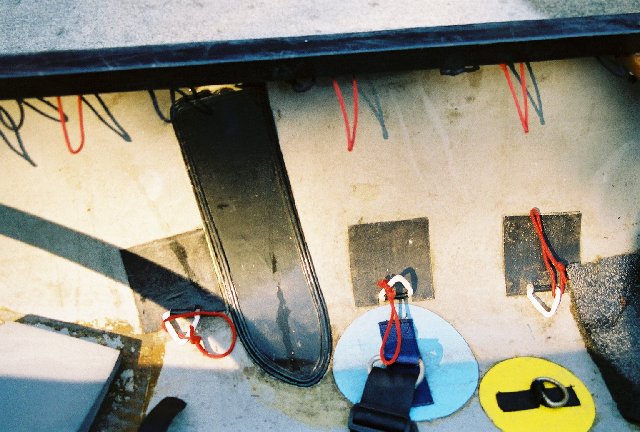
| 9. Closeup of right inside repair. None of the inside patches were painted since they were covered by side flotation or the saddle. |
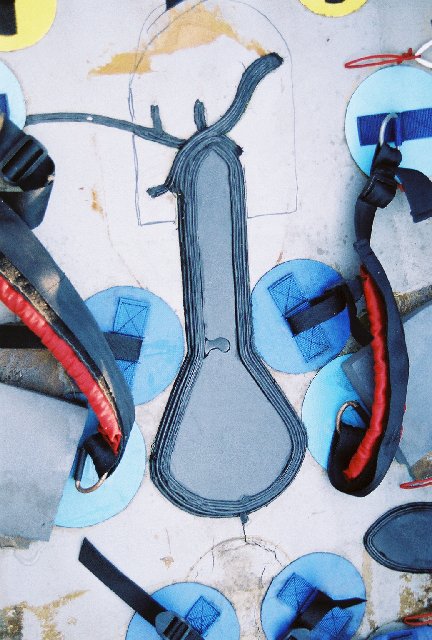
| 10. Center/bottom inside repair, the damage and cracks on the inside extended well beyond the cracks on the outside requiring a large reinforcement patch. beyond the outside weld since the crack |
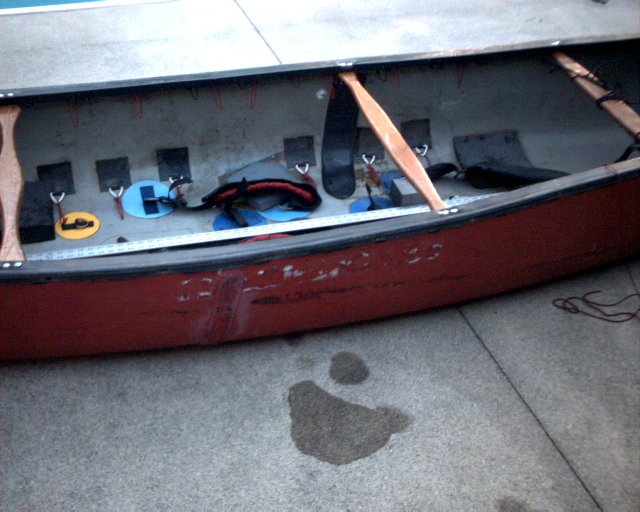
| 11. Left inside and right outside repairs. |
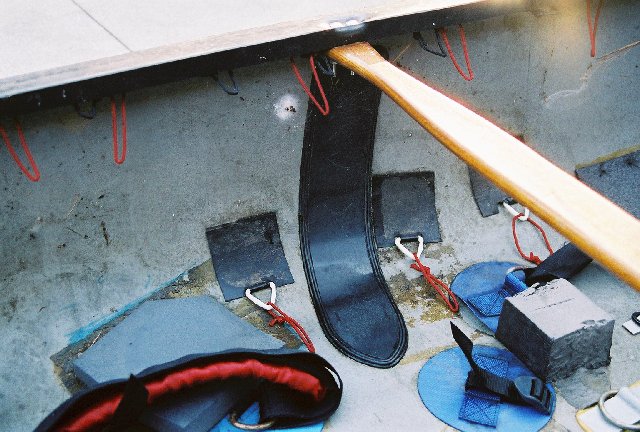
| 12. Closeup of left inside repair. |
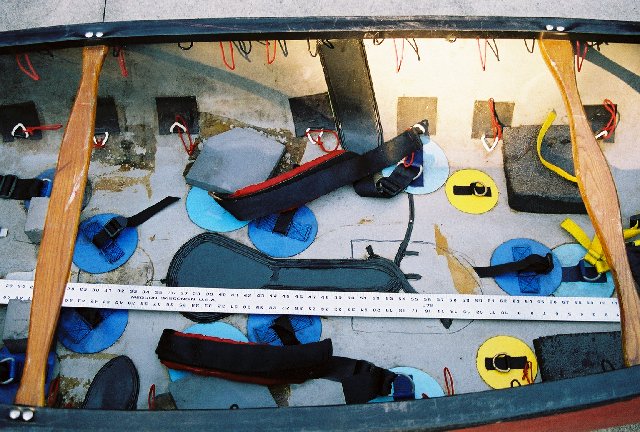
| 13. Repair on inside went almost full length of saddle. You can see the tiedowns for the saddle (solo setup) as well as the thigh straps. Note: To allow for easier boat repairs, it is highly recommended to attach the saddle by strapping it in instead of using glue. This is especially true with saddles that attach or are wedged under thwarts. Doing so causes the bottom hull of the boat to have less "give" which causes that area of the hull to be more easily damaged. |
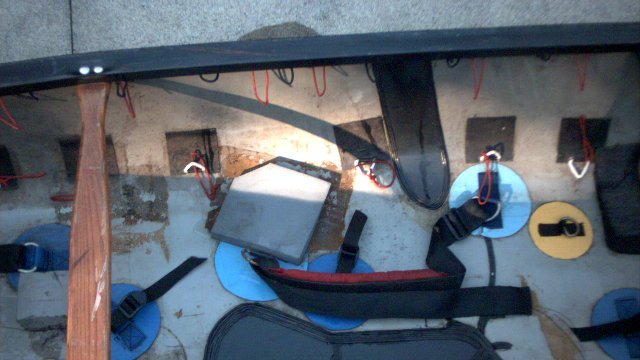
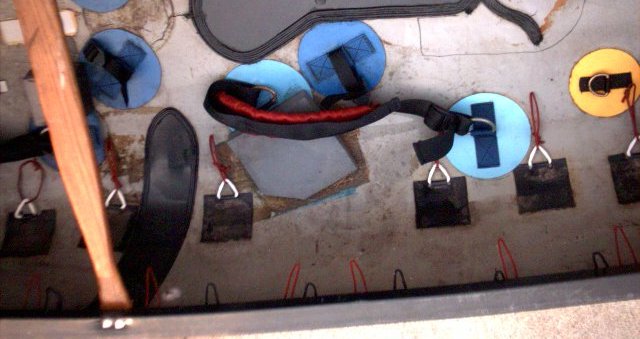
| 14. These two pictures show all the inside repairs showing the full extent of the damage (and just how close the boat came to being completely torn in two). [Note: Bow is to the left.] |
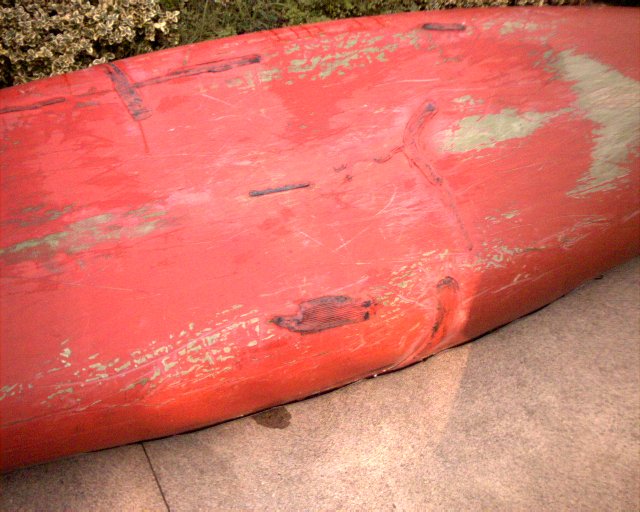
| 15. Full view of bottom (bow to left). Note that only two small sections of the hull remained intact. (Jim Booker once mentioned the most damaged boat he ever repaired showed up in three pieces. Two separate halves on the roof rack, plus one of the ends in the trunk.) |
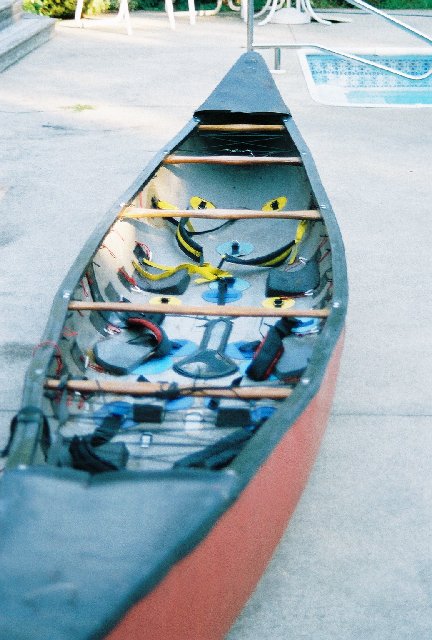
| 16. Lengthwise view down the boat. The boat originally had wood gunnels. After the wrapping Old Town Tripper gunnels were installed instead (with metal inserts). The deck plates were Old Town Otter (extra long) with water deflectors. They fit almost perfectly. (After the boat was finally scrapped Rod Dore claimed the gunnels; Suzanne claimed most of the surviving ABS to use for other repairs. Skip transferred the outfitting into a brand-spanking-new ME.) |
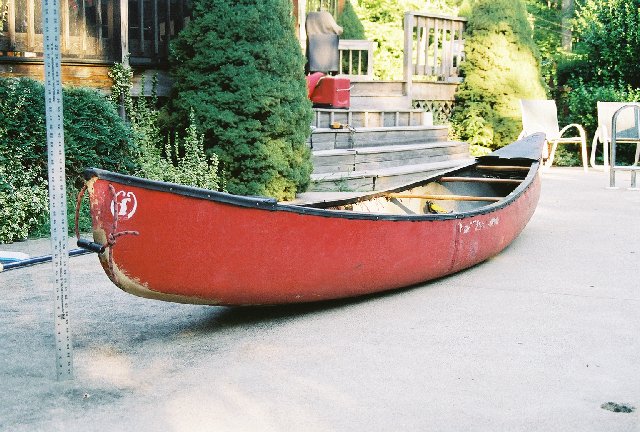
| 17. A decade after the original damage and repair, the boat still looks reasonably good. The repairs had almost no effect on hull shape (but did add quite a bit of weight.) |